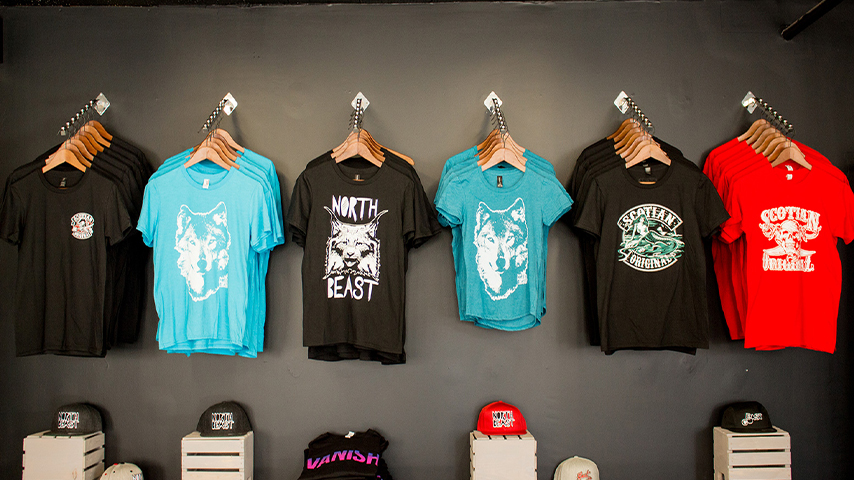Printing custom shirts is a fantastic way to showcase individuality, promote a brand, or commemorate special events. Various printing methods can be used to create custom designs, each with its unique advantages and suitable applications. In this article dallasshirtprinting.com will explores the most popular techniques for printing custom shirts.
Screen Printing
Screen printing, also known as silkscreen printing, is one of the oldest and most popular methods for printing custom shirts. This technique involves creating a stencil (or screen) and using it to apply layers of ink on the shirt.
Process:
- Design Creation: Start with a digital design and print it on a transparent film.
- Screen Preparation: Coat a mesh screen with a light-sensitive emulsion. Place the film on the screen and expose it to light, hardening the emulsion except where the design blocks it, creating a stencil.
- Ink Application: Place the screen on the shirt and apply ink over the screen. Use a squeegee to spread the ink across the screen, transferring the design onto the shirt.
- Curing: Heat the printed shirt to cure the ink, ensuring it bonds with the fabric.
Advantages:
- Durable and long-lasting prints.
- Cost-effective for bulk orders.
- Vivid colors and excellent print quality.
Best For:
- Bulk orders and simple designs with fewer colors.
Direct-to-Garment (DTG) Printing
DTG printing uses specialized inkjet technology to print designs directly onto the shirt. It’s similar to printing on paper but on fabric.
Process:
- Design Preparation: Make or choose a digital layout.
- Printer Setup: Load the shirt into the DTG printer.
- Printing: The printer applies ink directly onto the fabric, producing high-precision and detailed prints.
- Curing: Heat the printed shirt to set the ink.
Advantages:
- High-resolution prints with fine details.
- No minimum order quantity, ideal for small batches or one-offs.
- Easily prints complex and multi-colored designs.
Best For:
- Small orders, detailed and colorful designs.
Heat Transfer Printing
Heat transfer printing involves transferring a design from special paper to the shirt using heat and pressure.
Process:
- Design Creation: Print the design onto transfer paper using special ink.
- Shirt Preparation: Position the transfer paper on the shirt.
- Heat Application: Use a heat press to apply heat and pressure, transferring the ink from the paper to the fabric.
- Peel Off Paper: Remove the transfer paper, leaving the design on the shirt.
Advantages:
- Produces photo-realistic images.
- Quick setup and production time.
- Suitable for printing on demand.
Best For:
- Small to medium orders, designs with photographic elements or gradients.
Sublimation Printing
Sublimation printing uses heat to transfer dye onto materials like polyester or polymer-coated shirts. The dye transitions from solid to gas without going through a liquid state.
Process:
- Design Creation: Print the design onto sublimation transfer paper using sublimation inks.
- Heat Transfer: Place the transfer paper on the shirt and use a heat press to apply heat and pressure. The dye sublimates, transferring the design into the fabric fibers.
- Cooling: Allow the shirt to cool, which solidifies the dye in the fabric.
Advantages:
- Vibrant, full-color designs that are permanent and won’t crack, peel, or fade.
- Soft feel as the dye becomes part of the fabric.
- Ideal for all-over printing.
Best For:
- Polyester fabrics, all-over prints, sportswear, and activewear.
Vinyl Cutting
Vinyl cutting involves cutting designs out of colored vinyl sheets and heat pressing them onto the shirt.
Process:
- Design Creation: Create a vector design and send it to a vinyl cutter.
- Cutting: The vinyl cutter cuts the design from the vinyl sheet.
- Weeding: Get rid of any extra vinyl so you can see the design.
- Heat Pressing: Place the vinyl design on the shirt and use a heat press to apply heat and pressure, bonding the vinyl to the fabric.
Advantages:
- Durable and vibrant prints.
- Suitable for simple, bold designs and lettering.
- Great for customization with names and numbers.
Best For:
- Small to medium orders, sports jerseys, and personalized apparel.
Conclusion
Each t-shirt printing method has its strengths and ideal applications. Screen printing is excellent for bulk orders with simple designs, DTG printing is perfect for detailed and colorful designs in small batches, heat transfer and sublimation printing are great for photo-realistic and vibrant designs, and vinyl cutting is best for bold, custom graphics. By understanding these methods, you can choose the best technique for your custom t-shirt printing needs, ensuring high-quality and personalized apparel.

